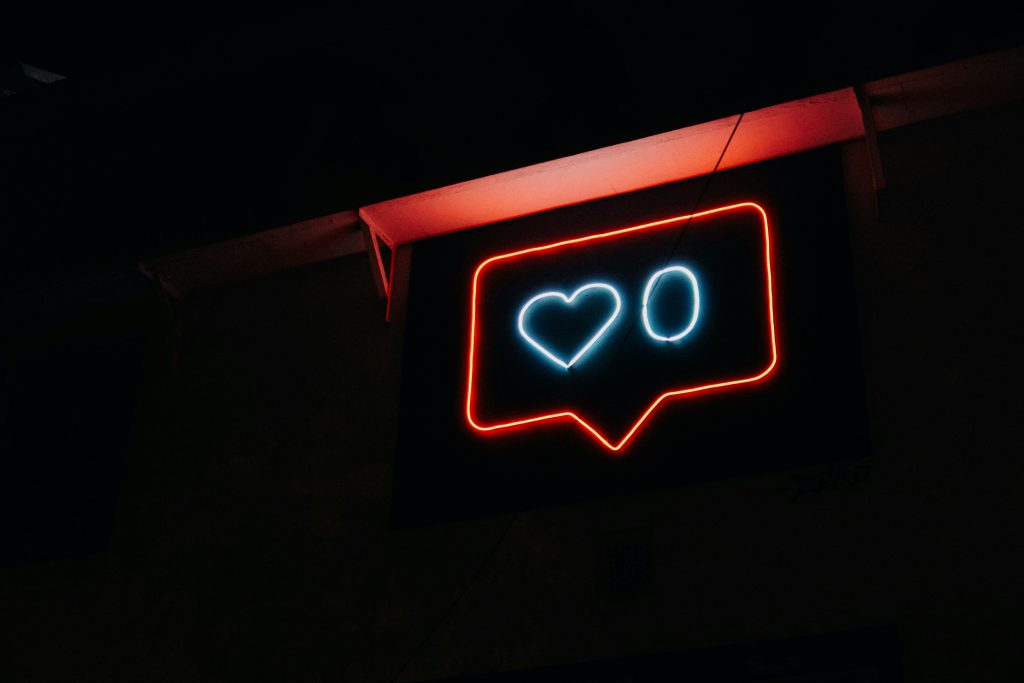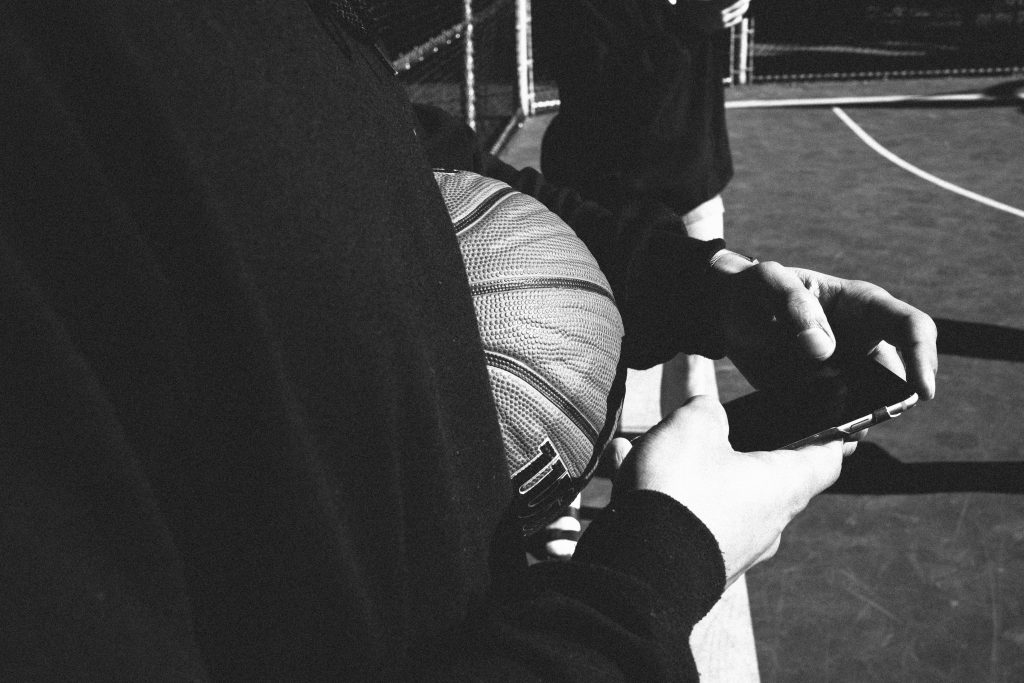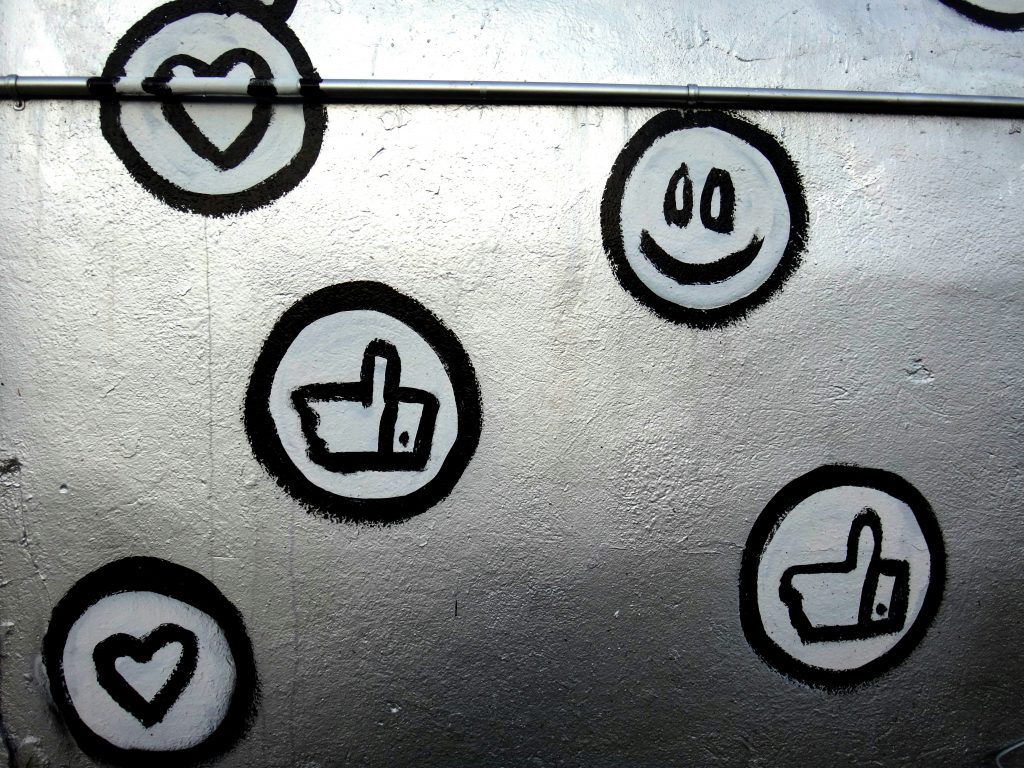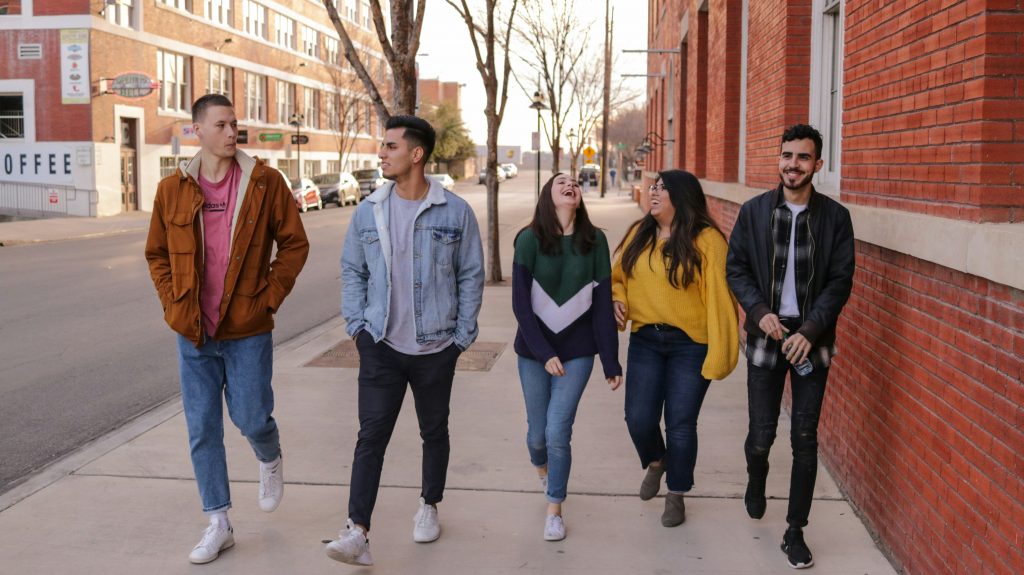Social media has grow to be integral to our each day lives, shaping the way in which we work together and search validation from others. Because the introduction of the ‘like’ button on Fb in 2009, customers have obtained ‘likes’ and ‘hearts’ as indicators of approval. This easy software permits customers to present and obtain speedy, quantifiable suggestions (Oremus, 2022). Initially symbolised by the enduring ‘thumbs-up’ icon, it has been extensively adopted by different platforms, reminiscent of Instagram, the place customers faucet a coronary heart to indicate their appreciation.
The accrued variety of likes on a put up can enhance our confidence, foster a way of belonging, and maintain us coming again for extra (Burrow & Rainone, 2017; Smith et al., 2021). Nonetheless, the validation from these little hearts may also encourage extreme social media use, and when the likes cease coming, it could actually go away us feeling rejected and decrease our shallowness (Timeo et al., 2020). Adolescence is a developmental interval characterised by heightened sensitivity to each rewards and rejection (Quarmley et al., 2019; Shulman et al., 2016). This leaves the query of whether or not adolescents, extra so than adults, are notably delicate to receiving this kind of social suggestions on social media.
Taking a computational strategy, this current research by Ana da Silva Pinho and colleagues (2024), revealed in Science Advances, seeks to reply this query utilizing a complete set of strategies and knowledge.

No likes? The researchers investigated how receiving extra or fewer likes influenced on-line engagement and temper.
Strategies
The researchers investigated sensitivity to social media suggestions throughout three research.
Research 1 analysed Instagram hint knowledge from adolescents (ages 13 to 19) and adults (ages 30-39). The information, which was initially collected between 2014 – 2015, included 1.72 million Instagram posts from 7,718 adolescents and eight,895 adults. The information consisted of customers’ actions, such because the variety of posts, timestamps, and the variety of likes. The researchers constructed a computational mannequin to understanding on-line engagement. In response to this reinforcement studying mannequin, an individual’s on-line engagement, or how usually they put up on social media, operates as a perform of what number of likes they obtain: the extra likes, the earlier the individual will put up once more. The mannequin additionally incorporates the hassle price that’s concerned in posting, reminiscent of opening the app and creating content material, and this can finally set a restrict to how usually somebody can put up.
Research 2 employed an internet experiment mimicking Instagram, the place 92 adolescents (ages 16 to twenty) and 102 adults (ages 30 to 40) posted memes below a high-reward (receiving 28-34 likes per put up) and a low-reward (receiving 6-18 likes per put up) situation. Actual-time suggestions (likes) was seen for posted memes. The individuals’ temper was measured at three timepoints; earlier than the experiment, between the 2 situations, and after the experiment.
Research 3 mixed historic Instagram hint knowledge, self-reports of social nervousness and problematic social media use, along with structural mind imaging knowledge. Magnetic resonance imaging (MRI) scans have been obtainable from 96 rising adults (ages 18-24). A computational studying mannequin was fitted to the Instagram hint knowledge to estimate studying charges.
Outcomes
Research 1 – likes matter
Utilizing a big dataset of Instagram posts and making use of a computational studying mannequin, the researchers discovered that adolescents confirmed a 44% larger studying charge in comparison with adults. The upper studying charge amongst adolescents, referring to how rapidly people adapt their posting behaviour in response to likes obtained on Instagram, signifies that their social media engagement is extra strongly motivated by their response to social suggestions in comparison with adults. Opposite to the researchers’ speculation, the adolescents didn’t present a decrease effort price. As adolescents are considered digitally superior to adults, the researchers anticipated that adolescents’ posting behaviour would additionally replicate their decrease effort in posting, referring to opening the app and creating content material. In sum, adolescents’ social media posting behaviours appear to be extra strongly influenced by will increase and reduces within the variety of likes they obtain, in comparison with adults.
Research 2 – likes have an effect on temper
Within the experimental research, evaluating conditions the place adults and adolescents obtained extra (high-reward) or fewer (low-reward) likes, the outcomes confirmed that adolescents displayed better fluctuations of their temper once they skilled shifts in variety of likes obtained. Particularly, each teams of individuals skilled elevated optimistic temper within the excessive reward situation, however the adolescents skilled better temper declines once they began to obtain fewer likes. Adolescents additionally ended the experiment with a extra destructive temper in comparison with adults. The outcomes revealed no distinction within the time it took to put up (posting latency) and usually, adolescents posted much less continuously total. These findings have been impartial of self-reported problematic social media use or social nervousness ranges.
Research 3 – mind areas
Within the third research, the researchers utilized an exploratory neuroimaging strategy. The individuals additionally supplied Instagram hint knowledge, with a mean 5.74 years of use. The intention was to look at long-term results of social media use and social media suggestions on the mind. The research recognized a number of mind areas related to social suggestions sensitivity, all that are recognized to be vital for fundamental suggestions processing, together with the amygdala, ventral diencephalon, pallidum, and putamen. The amygdala, recognized for its key position in emotion processing, was additionally discovered to be related to social media sensitivity, social nervousness, and problematic media use.

Younger individuals are thought of digitally superior to adults. Nonetheless, this didn’t affect posting behaviour. Extra so than adults, adolescents adjusted their on-line engagement based mostly on the variety of likes they obtained.
Conclusions
General, the outcomes help the speculation that adolescence is a developmental interval characterised by heightened sensitivity to social media suggestions, reminiscent of likes. In comparison with adults, adolescents usually tend to regulate their posting behaviours based mostly on the variety of likes they obtain. This sensitivity can be mirrored in better temper fluctuations, with adolescents experiencing extra destructive temper modifications once they obtain fewer likes. Structural mind imaging knowledge additional help this discovering, displaying that particular mind areas, such because the amygdala, are concerned on this heightened sensitivity.
Strengths and limitations
A key energy of the research is its concentrate on developmental sensitivity by evaluating adults to adolescents, which has been highlighted as an vital perspective within the social media literature (Orben et al., 2022). One other energy is that the researchers utilized all kinds of methodological approaches and knowledge sources, together with goal Instagram hint knowledge, experimental proof, and mind imaging knowledge. Collectively, this supplies a multidimensional understanding of social suggestions throughout developmental phases.
The reliance on self-report measures of social media use and engagement has been a limitation of present analysis (Hodes & Thomas, 2021), which the present research overcomes. Additionally, relatively than specializing in broad conceptualisations of social media use (e.g., time spend on social media), the researchers zoom in on a particular side of social media, specifically receiving likes on Instagram. A associated limitation is, nevertheless, that Instagram is a particular platform, and the generalisability of the outcomes to different platforms must be examined additional. Whereas the researchers chosen the platform based mostly on its recognition throughout adolescent and grownup populations, generational variations should be current in the way in which adolescents versus adults work together with the platform (e.g., what kind of content material they put up). Additionally, because the researchers spotlight themselves, though receiving likes is a key affordance throughout many social media platforms, different forms of suggestions, reminiscent of feedback or messages, could add to the complexity of real-world social media suggestions and ought to be investigated additional.
Personally, I discovered it a bit troublesome to achieve a transparent understanding of the traits of the samples included within the research, impeding my capacity to guage the generalisability of the outcomes to different populations and contexts. The researchers state that individuals have been recruited to the experimental research from English-speaking international locations by way of social media, however I feel the research would have benefitted from a demographics desk for all of the samples included within the research. This may additionally assist make clear the distinct developmental durations which might be investigated throughout the three research. It must also be famous, that whereas this research has added to the totality of the findings, the small pattern dimension (N < 100) included within the mind imaging research is proscribed on the subject of generalisability.

Digital environments are advanced, and future analysis might have to contemplate the a number of methods one can obtain suggestions on social media platforms, together with messages and reactions.
Implications for apply
This research contributes to the social media literature by using a wide range of strategies to discover adolescents’ sensitivity to social media suggestions. The findings point out that adolescents are notably delicate to receiving extra or fewer likes on social media, suggesting that what number of likes they obtain can affect their posting exercise. Receiving fewer likes within the experimental situation was additionally related to experiences of better temper declines amongst adolescents.
The analysis supplies a helpful step in understanding how younger individuals are impacted by social media suggestions, but it surely stays unclear whether or not receiving extra or fewer likes is solely optimistic or destructive. On one hand, the outcomes counsel that extra likes can result in elevated social media engagement, which can additional contribute to extreme use – a probably dangerous impact. Alternatively, fewer likes would possibly cut back posting engagement, which may very well be perceived as a optimistic consequence. The present research highlighted, nevertheless, that the latter can be related to temper declines.
For me, one query that arises after studying the paper is how receiving social media suggestions would possibly affect different on-line behaviours. For instance, whereas the outcomes counsel that receiving extra likes will increase posting behaviour, might receiving fewer likes result in better passive social media use, reminiscent of scrolling by others’ profiles as a substitute of actively posting content material? A discount in posting behaviour doesn’t essentially equate to discount in total social media exercise.
For professionals working with adolescents, I feel a key takeaway is that youths’ sensitivity to rejection and social suggestions extends to the net world. Facilitating significant conversations about social media use, reminiscent of discussing how likes, feedback, or messages affect their well-being and psychological well being, can present helpful alternatives to help younger individuals in navigating digital environments.
One other sensible implication deriving from this research is the necessity for age-appropriate insurance policies and methods within the design of social media platforms. One avenue highlighted by the researchers themselves is to cut back the emphasis on likes. For instance, Instagram permits customers to cover likes on their private accounts. Educating younger individuals about this and associated options might show helpful in lowering the destructive results of social media use on their temper and behavior.

There’s a want for age-appropriate insurance policies and methods within the design of social media platforms to assist cut back the destructive results of social media use on younger individuals’s temper and behavior.
Assertion of pursuits
No battle of pursuits to declare.
Hyperlinks
Main paper
da Silva Pinho, A., Céspedes Izquierdo, V., Lindström, B., & van den Bos, W. (2024). Youths’ sensitivity to social media suggestions: A computational account. Science Advances, 10(43), eadp8775. https://doi.org/10.1126/sciadv.adp8775
Different references
Burrow, A. L., & Rainone, N. (2017). What number of likes did I get?: Goal moderates hyperlinks between optimistic social media suggestions and shallowness. Journal of Experimental Social Psychology, 69, 232–236. https://doi.org/10.1016/j.jesp.2016.09.005
Hodes, L. N., & Thomas, Ok. G. F. (2021). Smartphone Display Time: Inaccuracy of self-reports and affect of psychological and contextual components. Computer systems in Human Habits, 115, 106616. https://doi.org/10.1016/j.chb.2020.106616
Orben, A., Przybylski, A. Ok., Blakemore, S.-J., & Kievit, R. A. (2022). Home windows of developmental sensitivity to social media. Nature Communications, 13(1), 1649. https://doi.org/10.1038/s41467-022-29296-3
Oremus, W. (2022). 21. The Curse of the Superior Button. In T. Bosch (Ed.), “You Are Not Anticipated to Perceive This”: How 26 Strains of Code Modified the World (pp. 131–138). Princeton College Press. https://doi.org/10.1515/9780691230818-023
Quarmley, M. E., Nelson, B. D., Clarkson, T., White, L. Ok., & Jarcho, J. M. (2019). I Knew You Weren’t Going to Like Me! Neural Response to Precisely Predicting Rejection Is Related With Anxiousness and Melancholy. Frontiers in Behavioral Neuroscience, 13, 219. https://doi.org/10.3389/fnbeh.2019.00219
Shulman, E. P., Smith, A. R., Silva, Ok., Icenogle, G., Duell, N., Chein, J., & Steinberg, L. (2016). The twin programs mannequin: Assessment, reappraisal, and reaffirmation. Developmental Cognitive Neuroscience, 17, 103–117. https://doi.org/10.1016/j.dcn.2015.12.010
Smith, D., Leonis, T., & Anandavalli, S. (2021). Belonging and loneliness in our on-line world: Impacts of social media on adolescents’ well-being. Australian Journal of Psychology, 73(1), 12–23. https://doi.org/10.1080/00049530.2021.1898914
Timeo, S., Riva, P., & Paladino, M. P. (2020). Being appreciated or not being appreciated: A research on social-media exclusion in a preadolescent inhabitants. Journal of Adolescence, 80, 173–181. https://doi.org/10.1016/j.adolescence.2020.02.010








